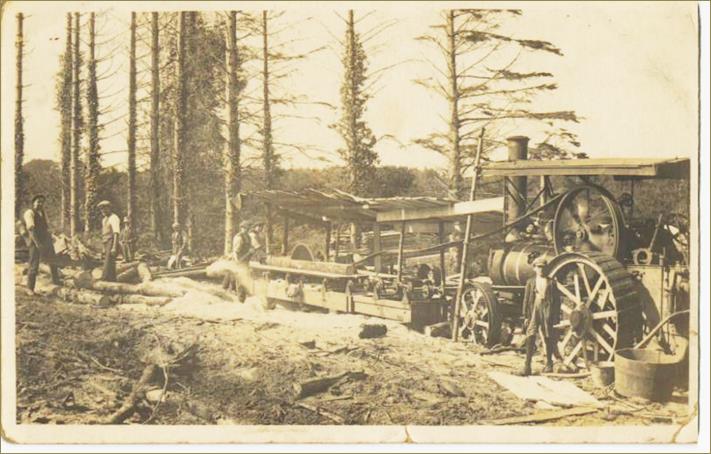


THE HISTORY OF TREBARTHA HALL - Extracts from a talk by Robert Latham in October 2011 |
||||||||||||||||||||||||||||||||||
| <<< To return to the "Trebartha & Trebartha Hall" page. | ||||||||||||||||||||||||||||||||||
| ||||||||||||||||||||||||||||||||||
| Click on a page number above. You are reading page 08 now. |
Wartime on the Trebartha Estate |

|
|
This picture shows the harvesting of timber for pit props. Trebartha Hall was requisitioned and became a hospital, initially for evacuees from Dunkirk and was operated by the 48th Divisional Field Ambulance. It was later used for airmen with skin diseases and then for American and Polish airmen and they embarked from Plymouth in June 1944 for the D-Day landing at Omaha Beach. There was a fire at the hall when it was occupied by the Americans. Hardcore was laid at the side of the house for the parking of lorries. A pump house was constructed below the lower fishponds to secure a supply of water to the hall. In 1942 and 1943 Trebartha was also used to hold Italian prisoners of war. They carved wooden ornaments, many from the panelling of the old hall, which they sold locally. The hall had suffered so badly that after the war the property was offered to the county but they declined to take it on. In October 1948 The Ministry of Works offered £5000 compensation based upon the fact that the house was beyond economic repair. The demolition was completed for £50 and all salvage materials became the property of the demolition company with the exception of the roof slates which were to be carefully removed and handed over to the Estate. The newspaper report on the demolition can be seen here. The hall once had as many rooms as there weeks in a year and 30 or more servants. Trebartha was a bird lover’s paradise. The starling was not known to breed in Cornwall until a nest was found at Trebartha in 1854. The starling is now a county wide resident. Other birds which used Trebartha Estate as their home were the greater spotted woodpecker, the stock dove, the rock dove, the hobby and the redstart. The first Cornish nesting sites for these birds were on the Trebartha Estate. |
The image at the top of the page shows views of and around Trebartha Hall used by Robert Latham in his talk. |